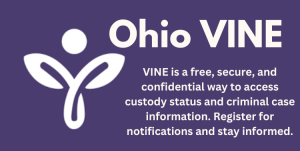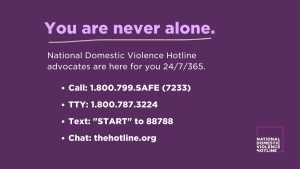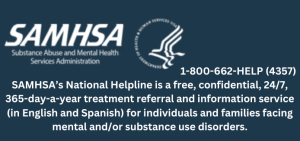Every 68 seconds, an American is sexually assaulted; every 9 minutes, that victim is a child.
Meanwhile, only 25 out of every 1,000 perpetrators will end up in prison. There is hope, our Victim Advocates have put together a list of resources for our community. If you or a loved one need assistance, contact our office at 740-833-2845.
*Click on the images to be sent to their live chats
All states and the federal government have passed victims’ rights laws. These laws provide victims with legal rights to be heard, informed, and present in various stages within the criminal justice system. Each victims’ rights depend on the laws of the jurisdiction where the crime is investigated and prosecuted: state, federal or tribal government, or military installation. While jurisdictions vary on how and what they provide, listed below are core victims’ rights:
-
- The right to be treated with fairness, dignity, sensitivity, and respect;
- The right to attend and be present at criminal justice proceedings;
- The right to be heard in the criminal justice process, including the right to confer with the prosecutor and submit a victim impact statement at sentencing, parole, and other similar proceedings;
- The right to be informed of proceedings and events in the criminal justice process, including the release or escape of the offender, legal rights and remedies, available benefits and services, and access to records, referrals, and other information;
- The right to protection from intimidation and harassment;
- The right to restitution from the offender;
- The right to privacy;
- The right to apply for crime victim compensation;
- The right to the expeditious return of personal property seized as evidence whenever possible;
- The right to a speedy trial and other proceedings free from unreasonable delay;
- The right to enforcement of these rights and access to other available remedies.
Rights afforded to victims of crime are either automatic or require a victim of crime to opt into services. Typically, victims can sign up for rights at any stage of the criminal justice process, though it most commonly happens during prosecution. If you did not elect your rights or opted-out, please know that you can change your mind at any time. To elect your rights, it is best to reach out to the agency that is currently in control of your case, for example:
1. The prosecuting attorney (during the trial phase);
2. Parole Board or other authoritative body (if offender is sentenced to prison); or
3. The Community Supervision Program (if offender is on probation or parole).
Stalking Awareness
Stalking impacts 1 in 3 women and 1 in 6 men in the United States. Unlike most crimes, stalking requires a pattern of behavior or course of conduct consisting of two or more incidents. These incidents or behaviors might not be viewed as criminal on their own, such as sending gifts. Stalking behaviors include: surveillance, life invasion, intimidation/emotional distress, and interference through sabotage or attack. These behaviors are varied and may change over time, as most stalkers engage in multiple tactics to scare their victims.
General Tips for Victims:
-
- Trust your instincts
- Call the police if you feel you are in any immediate danger
- Keep a record log
- Save evidence when possible
- Get connected with a local victim service provider
Resources:
Stalking Incident & Behavior Log
Protective Order Violations As Stalking
Stalking Behaviors Targeting LGBTQ+ Individuals
Stalking Behaviors Targeting Immigrant Victims
Identifying Stalking: SLII Strategies
Technology-Facilitated Stalking Behaviors
Domestic Violence
Domestic violence is the willful intimidation, physical assault, battery, sexual assault, and/or other abusive behavior perpetrated by an intimate partner against another. It is an epidemic affecting individuals in every community, regardless of age, economic status, race, religion, nationality or educational background. Violence against women is often accompanied by emotionally abusive and controlling behavior, and thus is part of a systematic pattern of dominance and control. Domestic violence results in physical injury, psychological trauma, and sometimes death. The consequences of domestic violence can cross generations and truly last a lifetime.
- More than 1 in 4 women have experienced rape, physical violence, and/or stalking by an intimate partner in their lifetime.
- Nearly 8 million women are raped, physically assaulted, and/or stalked by a current or former intimate partner each year.
- 1 in 5 women and 1 in 38 men have experienced rape in her or his lifetime.
- Nationwide, an average of 3 women are killed by a current or former intimate partner every day.
- Survivors of color and immigrant survivors face increased barriers to accessing safety and services.
- Witnessing violence between one’s parents or caretakers is the strongest risk factor of transmitting violent behavior from one generation to the next.
- Boys who witness domestic violence are twice as likely to abuse their own partners and children when they become adults.
- 30% to 60% of perpetrators of intimate partner violence also abuse children in the household.
- Boys who witness domestic violence are twice as likely to abuse their own partners and children when they become adults.
- Almost one-third of female homicide victims that are reported in police records are killed by an intimate partner.
- In 70-80% of intimate partner homicides, no matter which partner was killed, the man physically abused the woman before the murder.
- Less than one-fifth of victims reporting an injury from intimate partner violence sought medical treatment following the injury.
- Intimate partner violence results in more than 18.5 million mental health care visits each year.
Domestic violence is one of the most chronically underreported crimes. Only approximately one-quarter of all physical assaults, one-fifth of all rapes, and one-half of all stalking’s perpetuated against females by intimate partners are reported to the police.
Resources:
Ohio Domestic Violence Network
Rainn – National Sexual Assault Hotline






